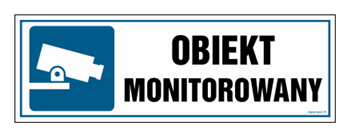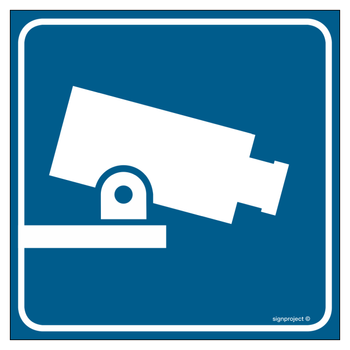Rodo vs. monitoring in the workplace

may 25, 2018. rODO, or the Regulation on the Protection of Personal Data, has come into effect in all European Union member states (including Poland), resulting in a number of regulatory changes.
One of the most invasive forms of personal data processing is video surveillance, which, according to the Office for Personal Data Protection, should only be used when security cannot be ensured for employees or customers by less privacy-invasive means.
INFORMATION CLAUSES
As for the marking of the area, covered by the monitoring, it is permissible to use so-called layered information clauses, consisting of a graphic sign / pictogram and an information clause. The DPA proposes to include on the monitoring warning board:
- admin data,
- purpose of data processing,
- monitoring range,
- data retention period,
- information that may surprise the person being watched,
- knowing where to look for complementary information (e.g., phone number, website address or point of contact).
This is the so-called first layer of the information clause.
Examples of correct and incorrect information clauses can be found at: https://uodo.gov.en/en/file/2008.
Full information clause containing the information referred to in Art. 13 The RODO is the so-called second stage of informing about the monitoring, which can be accomplished in a variety of ways - such as posting information at the facility's reception desk or displaying it on a publicly accessible monitor.
Video surveillance signs should be:
- placed in close proximity to sites, subject to surveillance,
- synthetic,
- visible and legible (i.e., be in line of sight or contain letters that can be read from a distance).
In addition, each room where the camera is located should be marked with a pictogram, such as. Facility monitored.
However, it should be noted that not every company that distributes health and safety signs can purchase a personalized plate that meets the above requirements, i.e. contains individual data on the processing of personal data. You can order it from us, by contacting the Customer Service Department on the implementation of custom printing.
EXCLUSIONS
Monitoring may not include (Art. 222 of the Labor Code, EROD - European Data Protection Board):
- sanitary facilities,
- locker rooms,
- canteens,
- roasters,
- medical and treatment rooms,
- saunas
- fitness rooms
- kin,
- parks and city benches.
WHEN MONITORING IS NOT SUBJECT TO THE RODO?
There are situations in which the recording and processing of the image is not subject to the provisions of the RODO.
The regulations refer to the so-called "Domestic Use Criterion," which, while not precisely specified, can be understood with the help of examples, such as. use of a parking camera in a car (while not collecting images that allow identification of individuals - including license plate numbers) and surveillance of a private garden (while the camera cannot cover public space).
PERSONAL DATA PROCESSING - REGULATIONS
As for the processing of video surveillance data, it is primarily regulated by Art. 6(6). 1 litre. f RODO (legitimate interest of the controller), art. 6(6). 1 litre. e of the RODO (necessity to perform a task carried out in the public interest or in the exercise of public authority) and Art. 6(6). 1 litre. c RODO (processing is necessary for the fulfillment of a legal obligation of the controller).
Only in exceptional cases may the consent of the owner of the personal data be used as a legal basis.
DATA STORAGE AND SHARING
According to EROD guidelines, recordings should be deleted after a few days, while in practice the period is usually between 30 days and 3 months.
Each person has the right to inspect and change his/her own personal data, and in addition, it is possible to make them available at the request of a third party if the purpose of their use is the same as the purpose of the use of monitoring (for example, when in a parking lot covered by video surveillance to ensure the safety of users, someone scratched our car, and we want to know the circumstances of the incident).


